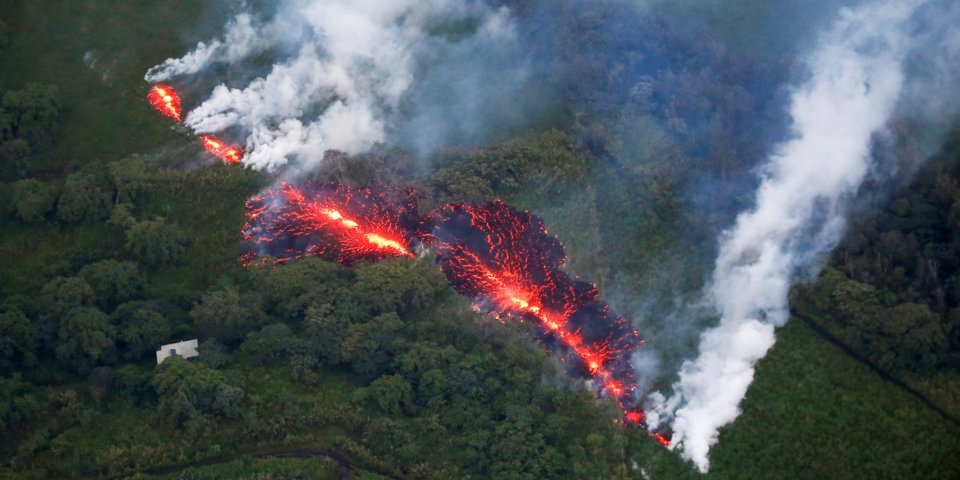On May 3, Hawaii’s Kilauea volcano erupted, prompting the evacuation of thousands of individuals. Now, almost two weeks later, the Kilauea volcano shows know signs of stopping, as new fissures open on the volcano, forcing more residents to flee.
After the initial blast 10 days ago, 18 fissures have opened on the volcano, spewing molten magma and rocks. The explosions also pollute the air with billowing smoke and toxic sulfur dioxide emissions.
Nearby vegetation withers in the volcanic smog. And according to the Hawaii Department of Health, commercial masks cannot offer any protection against the poor air quality,
Not only is clean air a concern, but so are the dangerous fissures, which continue to break open on the east side of the island.
A Hawaii resident described the sounds as “a near-constant roar akin to a full-throttle 747 interspersed with deafening, earth-shattering explosions that hurtle 100-pound lava bombs 100 feet into the air.”
According to the U.S. Geological Survey, even more fissures could open around the volcano. More evacuations followed this warning, however, some residents are staying put and planning to beat the odds.
However, the Hawaii National Guard is advising people to leave as soon as the evacuation orders are made, both to keep themselves and first responders safe.
In a statement, National Guard Major Jeff Hickman, said, “Evacuate if you can , because if we have to come in and get you we’ll be putting first responders at risk. There’s a point where se’ll tell our first responders, ‘Nope, you can’t go.’”
Since the initial eruption, close to 2,000 people have been evacuated and close to 40 buildings have been destroyed.




